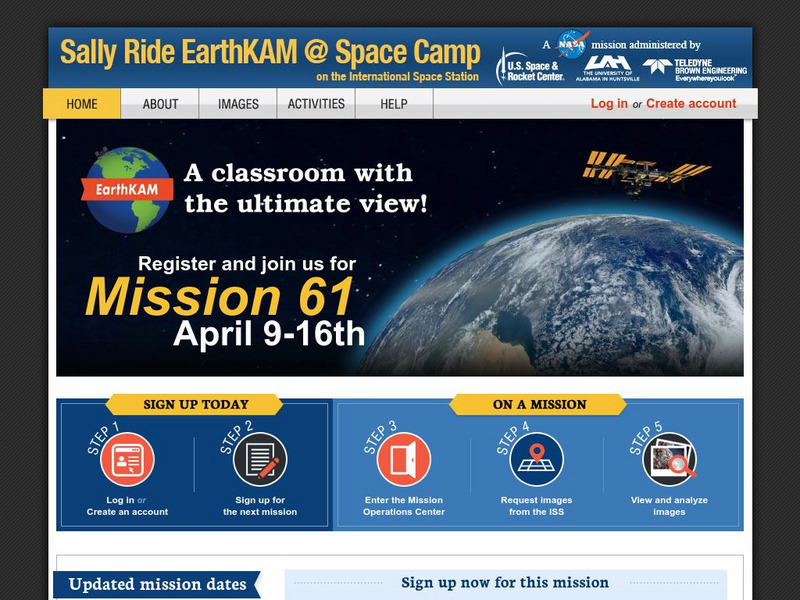Hi, what do you want to do?
Curated OER
Clouds and Rain
Young scholars study how clouds form, what different types there are and what rain is. In this atmospheric lesson students make a cloud and create evaporation.
Curated OER
Pangaea Puzzle
Young scholars explore plate tectonics and the formations of the Earth's surface and why maps are distorted. For this Earth's surface lesson students complete a lab and answer questions.
Curated OER
Earth Surface Socratic Questions
Students explore the ways Earth's surface is shaped by hydrologic, climate and tectonic forces by participating in a whole class discussion. They respond to prompts that lead them to conclusions about the relationships between landforms...
Curated OER
Using Soil properties and Vegetation Differences to Hypothesize the Land Use History and Topographic Differences between Two Locations
Ninth graders take soil samples and perform tests on these samples.
Curated OER
Beach Zonation
Students identify and separate the different zones of the beach by observation. They investigate beach zonation by gathering and comparing sand samples gathered from different areas of the beach.
Curated OER
Stratigraphy -- Layers of Time in the Earth
Students are introduced to the process of stratification. Using the internet, they read about the Richard Beene archeological site near San Antonio. Using a map, they color code the different layers present at this site and answer...
Curated OER
Treasure Hunt Region
Learners are introduced to new geography related vocabulary words. In groups, they focus on a different region of the school and develop a new name for it. They create a treasure map for another group to use in the region of the school...
Curated OER
Bar Me In
Fourth graders watch a video about constructing bar graphs. They create their own graph and interpret it.
Curated OER
Water Quality Monitoring
Students comprehend the four parameters of water quality. They perform tests for salinity, dissolved oxygen, pH and clarity or turbidity. Students comprehend why scientists and environmental managers monitor water uality and aquatic...
Curated OER
Keep in Touch: Communications and Satellites
Pupils investigate how satellites help people communicate with others far away and in remote areas. They discuss a scenario of someone travelling to an area with no mode of communication, observe a teacher demonstration, and create a...
Curated OER
Algebra, Multiplication, and Division of Fractions
Students gain knowledge by measuring time and distance for solving unknowns in an equation. They also will design an airplane and chance to communicate mathematically by writing essays.
Curated OER
How Does Climate Influence Civilization
Students demonstrate their knowledge of the Earth's systems. In this climate lesson students identify the climate of a chosen area and the effects it has on the lifestyles of those living there.
Curated OER
Spy on a Spider
Young scholars view slides or live specimens to name and describe the distinguishing features of groups of arthropods, especially spiders and insects. They complete worksheets, observe webs and then search for and record where spiders...
Curated OER
Facts, Feats and Folklore: Spiders
Students review and discuss a variety of sayings, folklore and superstitions about spiders. They discuss this information and choose either an interesting fact or appealing foklore tradition to illustrate.
Curated OER
Climate in the Western Regions
Students examine the interactions of the Earth's systems and other objects in space. In this climate change lesson students study the pros and cons of different climates and what their preferences are.
Other
Lehigh University: Climate Change
An inquiry-based science unit for middle school students centered on weather and climate. The lessons integrate technology and lab activities while teaching about Earth system energy balance, greenhouse gases, paleoclimatology, and how...
Thinkport Education
Thinkport: Made Clear: How Are Humans Impacted by Extreme Weather?
The extremes in weather have an impact on businesses, communities, recreational activities and anything else that depends on the weather.
Science Education Resource Center at Carleton College
Serc: Landscape Regions
A lab activity where students study the" relationships between landscape appearance, topography and underlying geology". In this particular activity students explore the landscape region of New York State to see the effects of...
Center for Educational Technologies
Cet: Exploring the Environment: Drought
The U.S. National Park Service has asked students to advise it whether the drought that greatly impacted the Midwest and Southwest is a consequence of global climate change or just an abnormal weather pattern. In either case, they will...
Globe
The Globe Program: Climate Module
Climate change affects the whole world, from the tropics to the poles. Through learning activities, students learn how weather over a long period of time describes climate, explore how sea level rise can affect coastal communities and...
Other
Nasa: Iss Earth Kam
Students get a whole new perspective of the world through images obtained from the International Space Station. Students can even request images to be taken through ISS EarthKAM. Activities and educator guides are provided.
PBS
Pbs Learning Media: Coastal Geological Processes
This interactive resource adapted from the National Park Service describes the many forces that affect shorelines, including tides, weathering, erosion, and deposition. Includes background reading handout and discussion questions.
Science Education Resource Center at Carleton College
Serc: Mn Step: Schoolyard Bio Blitz
For this activity, learners visit a small section of the schoolyard and record observations in a scientific journal. They will observe different things as the school year progresses, including ecological relationships, human impact on...
PBS
Pbs News Hour Extra: Satellites Orbit the Sun to Better Predict Solar Storms
For the first time, NASA scientists have generated a full image of the sun, front and back, using twin orbiting satellites. The new view of Earth's star will allow for the study of solar weather events like coronal mass ejections that...

























